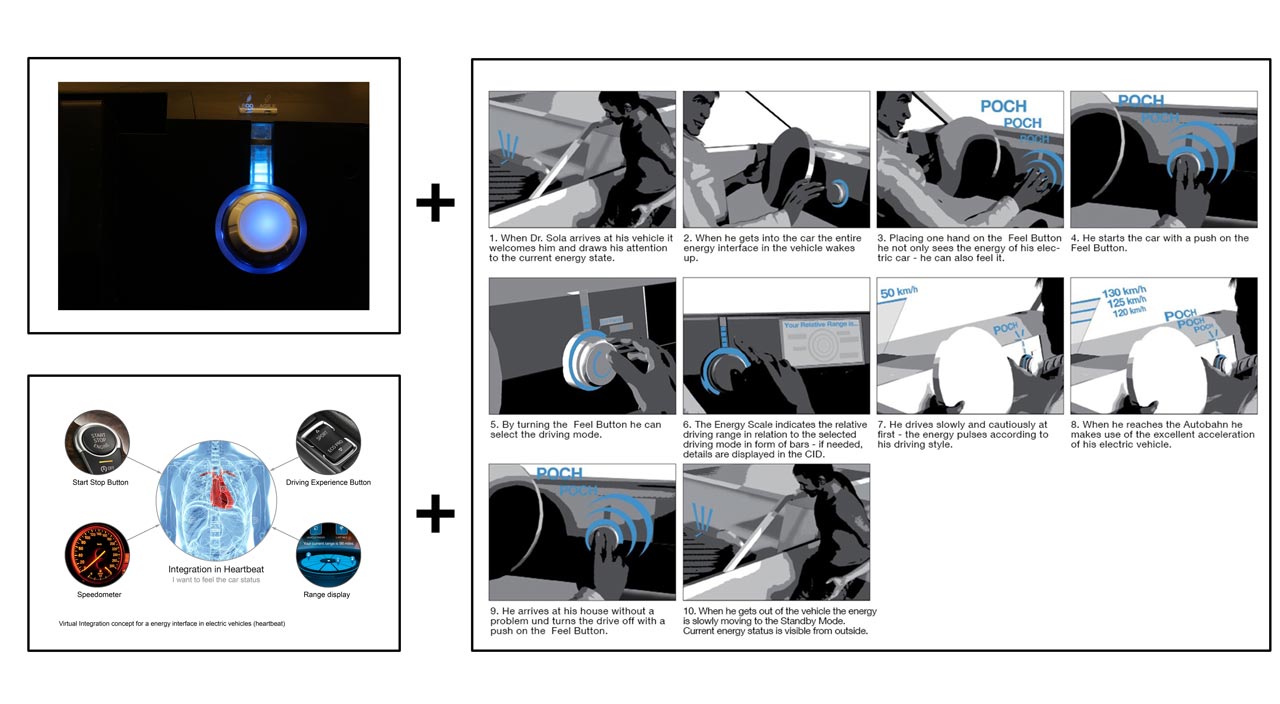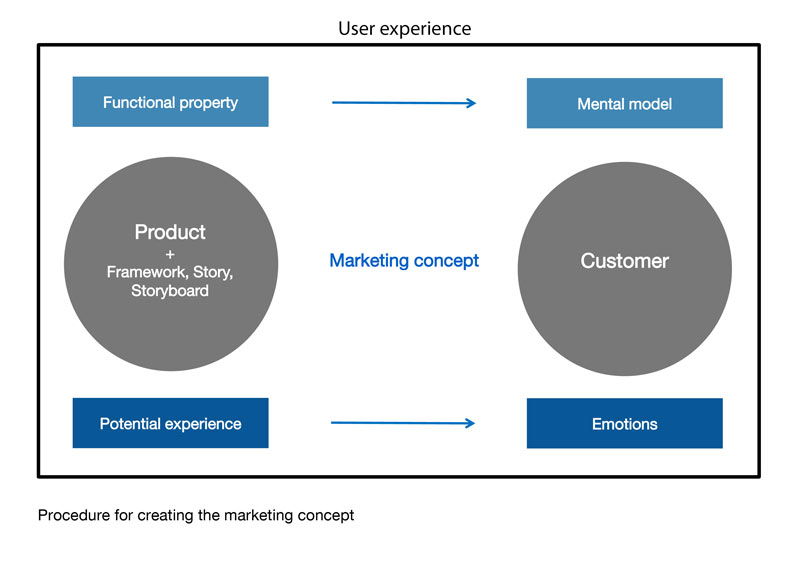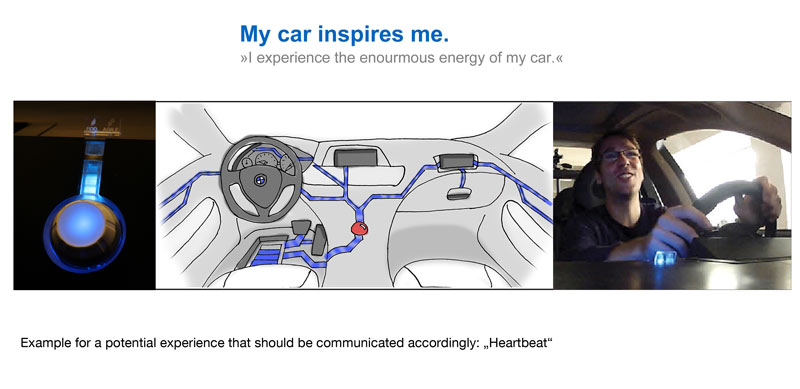Create a Marketing Concept.
Convey the story behind the product.
Why.
Even before the customer is using the product it is appropriate to communicate the underlying story, highlighting UX-potentials and creating a feeling of anticipation.
What.
Convey a mental model or a representative experience based on the product and the story. Depending on the target group for the marketing, adapt and communicate the story and solicit qualitative customer feedback.
How.
Framework, integration concept, story (incl. customer profiles and car persona), storyboard, product.
First, define what is to be conveyed by the marketing concept. If you want to highlight a new potential user experience, marketing should focus on conveying emotions. In case a new functional characteristic is relevant for the experience, it is important to communicate the underlying mental model.
In the next step, define the target group that should be addressed with the marketing concept. Accordingly, develop a marketing persona that does not necessarily correspond to the real customer. Decide consciously if the persona should represent or address the real user of the product, the buyer or the desired image of the user.
UX-framework, story and storyboard, in addition to technical details of the product design, are considered when creating the marketing concept. Adjust the story to be suitable for marketing, depending on the defined communication objective and the selected target group. Thus, for example, an advertising spot can build up directly on the existing UX-storyboard.
When you evaluate the marketing concept, do not emphasize on traditionally quantitative aspects such as the frequency of the watched commercial. Rather, examine if the communication objective of a mental model or an experience is conveyed.
Marketing concept
Insights
- The marketing process continuously completes the UX-process.
- Do not create a marketing concept that is based solely on the specific product.
- Instead, use all previously generated UX-representations, such as framework, story and storyboard
References
Freter, H. (2008): Markt- und Kundensegmentierung - kundenorientierte Markterfassung und –bearbeitung. Stuttgart: Kohlhammer, 2008. Adlin, P., Pruitt, J. (2010). The Essential Persona Lifecycle - Your Guide to Building and Using Personas. Burlington, USA: Elsevier Inc. Steward, M., Francois, J., Zhang, H., Mc Crickard, D.S. (2011). Persona-Storyboard Fusion - A hybrid approach to improving design artifacts. In Proceedings of HCI International 2011 (HCII '11), Orlando FL., S. 77-81. Michailidou, I., Von Saucken, C., and Lindemann, U. (2013): How to create a User Experience Story. In Proceedings of DUXU/HCII 2013, Part I, LNCS 8012. Springer, Heidelberg, S. 554–563. Quesenbery, W.; Brooks, K. (2010) Storytelling for User Experience. New York: Rosenfeld Media, 2010.




